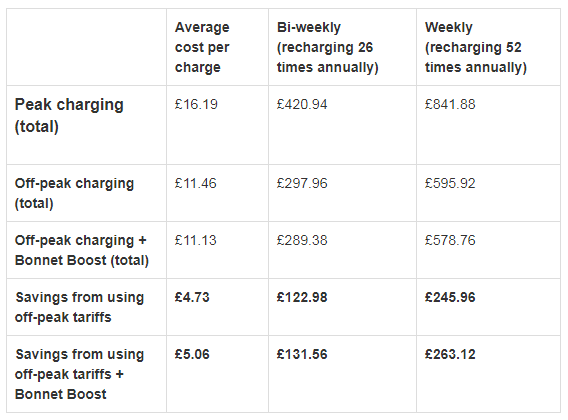Gridserve Increases The Cost Of Electricity At Its Public Chargepoints.
Friday, 16. June 2023
Charge point operator Gridserve has increased the cost of charging an electric vehicle (EV) on its Electric Highway network.
The price rise took effect yesterday (Thursday, June 1), with the cost of using its high-power chargers increasing by 3p per kWh, to 69p/kWh.
To simplify pricing, and also to reduce some confusion around the levels of power delivered, Gridserve is also moving all DC chargers, including its medium-power chargers and those at our Electric Forecourts, to the same pricing.
The charge point operator said that one rate for all DC chargers on its network will “avoid unnecessary confusion of different rates at different locations, or even different rates at the same location”, where it has multiple charging speeds.
It added: “While DC charging will increase slightly at this time, we’ve been able to keep our AC chargers at 49p/kWh, to remain as affordable as possible and still below the industry average.”
It acknowledged that the price for DC charging may be “unwelcome news”.
“We also hope you appreciate that Gridserve have held our pricing below that of competing networks for some time now, whilst our cost base has continued to inflate, in some cases above our pricing,” it explained
“It vitally important that we continue to ramp up investment in chargers, people, materials, and in our supply-chain partners, to deliver the infrastructure, services and confidence necessary to support the transition to EVs in the earliest possible timeframes.”
Gridserve says it needs to do this in a way that is sustainable for both its business, and its customers.
“That’s why we are only marginally increasing pricing, and even at the new levels will remain amongst the most competitively priced charging in the UK for high-power chargers,” it said.
Pre-authorisation limit for charging an EV
Gridserve has also announced that it is updating its Rugby Services Electric Super Hub pre-authorisation limit.
While it is able to keep its pre-authorisation to £1 across the rest of the Gridserve Electric Highway, the Tritium chargers at Rugby need a higher pre-authorisation to begin the charge session.
The charger then delivers energy up until it reaches the pre-authorisation limit and stops the charge.
Gridserve explained: “We’ve received a lot of feedback from customers that this is often an inconvenience, as they have to return to their cars to re-start charging when they haven’t reached the required state of charge.
“In order to try and limit disruption to our customers charging sessions, we are increasing the pre-authorisation limit to £35 at Rugby Services. This is still among the lowest in the industry and we will endeavour to keep it that way.”
It continued: “Price rises will never be welcome news but our promise to you is that we will continue to invest heavily in strengthening the UK’s charging provision so that drivers have the confidence to switch to electric vehicles and the transition to electric happens in the shortest possible timeframes to limit climate change and the negative impact on our planet.” By Graham Hill thanks to Fleet News



























